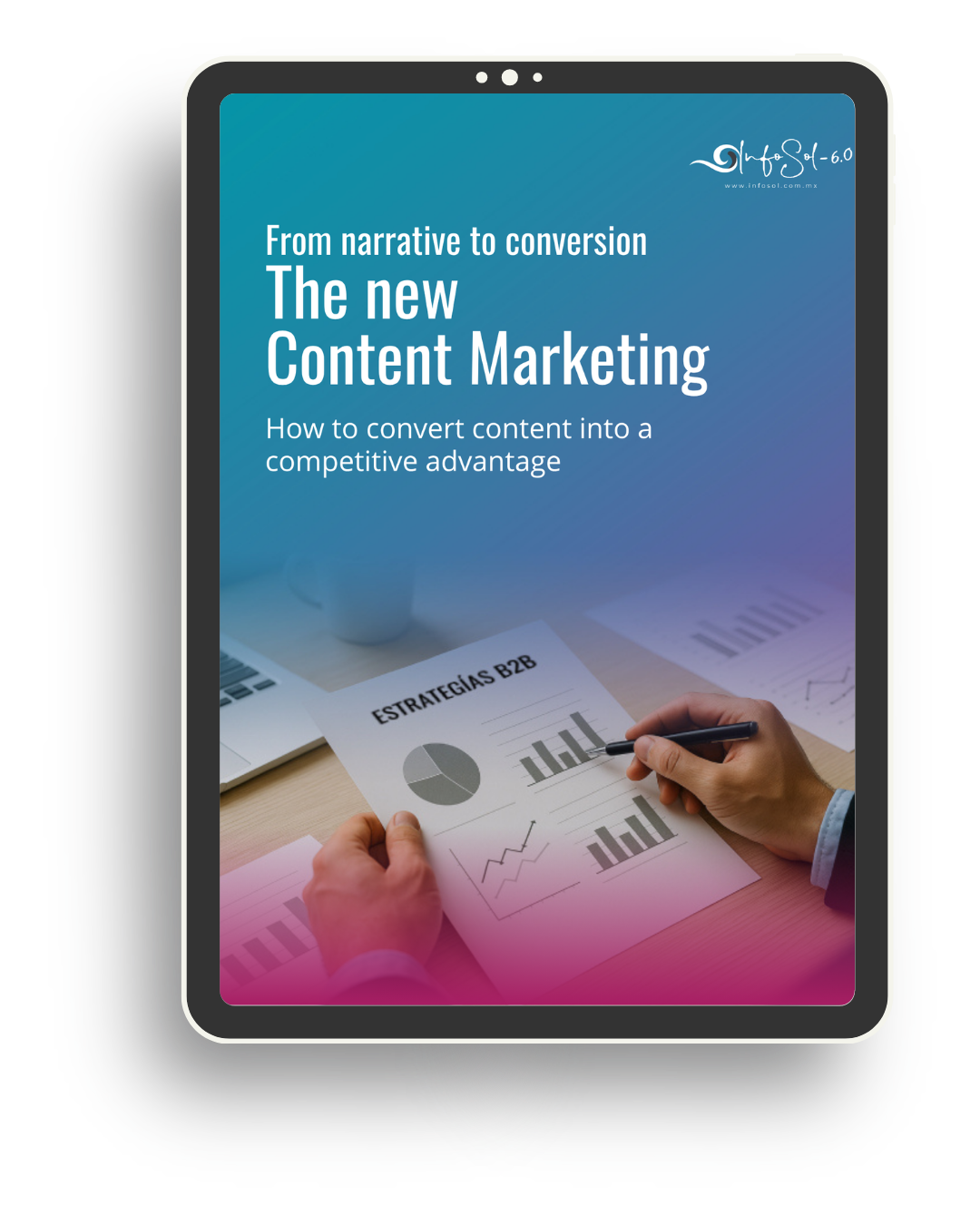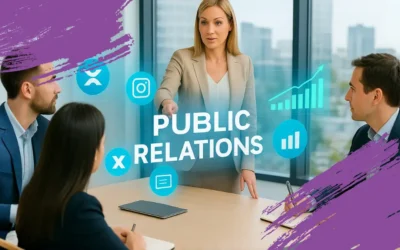What if your next customers are already searching for exactly what you offer—but your brand isn’t showing up? In an online world saturated with messages, the key isn’t to speak louder; it’s to be discovered precisely at the right moment. Inbound marketing combines strategy, SEO, and public relations to turn visibility into connection—and connection into tangible results.
Today, consumers research, compare, and decide before talking to a salesperson, so the difference between being seen and being chosen depends on your brand’s ability to appear right when users are seeking answers. This is where inbound marketing sets the pace: it attracts organically and with purpose, building trust through content.
Being found is the new starting point
68% of online experiences begin with a search engine, according to BrightEdge—underscoring the need to strengthen your digital presence so you can connect with potential customers from the very first click.
In this guide, you’ll learn how to apply an inbound marketing strategy powered by SEO, GEO, and optimized public relations so your brand is discovered, remembered, and chosen—both in traditional search engines and on AI-driven platforms.
What is inbound marketing and why is it key to attracting customers today?
Inbound marketing is a methodology focused on attracting potential customers organically through valuable, relevant, and optimized content. Instead of pushing ads—which can sometimes feel intrusive—it’s about showing up precisely when people are searching for solutions.
Today, people use the web to stay informed about what matters most, find answers, explore new ideas, and make purchase decisions—across multiple platforms, voice assistants, search engines, and AI tools.
In fact, 30.6% of internet users worldwide say they discover new products and services through search engines, according to DataReportal—evidence of inbound marketing’s role in brand discovery.
That’s why implementing SEO (Search Engine Optimization) and GEO (Generative Engine Optimization) in your content marketing strategy is essential to maximize brand discovery and expand visibility across touchpoints.
This strategy starts with discovery and strengthens through the authority, trust, and connection your brand builds via its online content—its digital footprint.
If your brand doesn’t appear when potential customers are looking for answers, other brands will seize the opportunity. Every search represents a chance to connect authentically with people who need what you offer. That’s why an inbound strategy centered on useful content plus SEO and GEO optimization is crucial to reach your audience at the moment they need you most.
What is brand discovery or discovery marketing?
Brand discovery—also known as discovery marketing—is the first stage of inbound marketing: the moment when a potential customer finds valuable, relevant, trustworthy, and useful content that addresses a specific need or pain point.
In other words, it’s when a brand naturally positions its content across key channels—search engines, digital media, and AI-driven platforms—right when users are most receptive to exploring solutions.
How to combine SEO, GEO, and public relations to attract potential customers from the first click (H2)
Traditionally, public relations (PR) focused on building awareness through media coverage. In the digital era, PR has evolved to contribute directly to marketing and business objectives.
Today, optimized PR integrates with digital strategies to expand reach, improve search positioning, extend content value beyond publication, and turn that content into a powerful magnet for new prospects.
In this context, many searches begin on Google or Bing, or on conversational interfaces (LLMs) like ChatGPT, Gemini, Perplexity, and other voice search platforms—where authority, clarity, and structure are critical to appear in responses.
This is where earned media coverage becomes even more relevant: through inbound marketing + optimized PR, it’s possible to stand out in traditional search engines as well as AI-based platforms.
Moreover, by combining PR with inbound marketing, a brand’s presence not only improves in search—it also trains AI models that pull from trusted, public sources (such as reputable media) to answer user queries.
That’s why an SEO- and GEO-forward PR strategy doesn’t just amplify content value—it turns content into an active tool to attract potential customers.
5 SEO strategies for public relations that drive discovery and trust
1. Connect from intent: keyword research and semantic optimization
This is the first step to understanding what your audience needs—and how they search for it. Strong keyword research aligns content with user search intent, answering real questions and helping people find you precisely when they need a solution.
To implement this correctly:
- Identify the topics, questions, and terms your prospects use at each stage of the decision process.
- Use analytics tools to uncover traffic opportunities.
- Create content that solves real questions and weave these keywords into all PR materials.
- Prioritize user intent over exact match: integrate semantic SEO that answers the intent (e.g., concepts, brand context, FAQs) so your content is recognized as a trusted source by both search engines and AI models.
2. Content development with a topic cluster
Inbound isn’t just about attracting visits—it’s about guiding them along a relevant journey, improving UX by making it easy to navigate the information they need.
Topic clusters organize content around a core theme with multiple related subtopics, helping users find clear, in-depth, well-connected answers.
When you integrate PR with well-structured, semantically optimized clusters, every external mention or media placement reinforces your digital ecosystem, making it easier for search engines to index your site.
DOWNLOAD OUR FREE EBOOK
Start communicating with purpose.

3. Make them find you—and stay: optimize content to attract and connect
With a clear structure and well-defined keywords, you can optimize content to improve search performance—making it easy to find and easy to understand.
SEO and GEO optimization help your content appear among top results and generate clicks, interest, and trust.
Key elements include:
- Clear, compelling titles: strategically incorporate target terms.
- Optimized meta descriptions: concise, persuasive, and aligned with query intent.
- ALT tags for images: improve accessibility and image SEO.
- Internal linking strategy: guide visitors to other useful content on your site to keep them engaged.
- Keywords and semantic optimization: not only make your content discoverable in search, but also help AI and voice search platforms surface it in responses.
4. Earn authority to attract better: get quality backlinks
Backlinks—links to your site from other websites—work like recommendations or votes of confidence online. For inbound, they’re essential because they strengthen authority and generate trust from the first click.
Each quality backlink is a chance to attract visitors who arrive with third-party validation (e.g., a reputable media outlet).
To generate quality backlinks:
- Publish original content in online outlets with high domain authority, ideally aligned with your industry or key audiences.
- Build strategic partnerships with influencers, experts, and thought leaders who already have credibility in your niche.
- Create valuable, highly shareable content that other sites naturally want to link to because it benefits their audiences.
5. Measure what you attract: optimize your strategy with real data
Effective inbound isn’t improvised—it’s measured, analyzed, and optimized. Evaluating impact shows which content attracts visits, which themes resonate, and where users are in their journey.
Recommended steps:
- Monitor rankings for your strategic keywords.
- Evaluate traffic sources and volume, especially from online media, external links, or evergreen content.
- Analyze engagement across social platforms and content hubs.
When properly implemented, inbound strategies increase content value, extend content lifecycle, and improve digital positioning.
Did you know?
According to HubSpot, 60% of marketers say inbound—through SEO and blog content—is their highest-quality lead source, highlighting the importance of continually measuring and optimizing attraction efforts.
Brand discovery and SEO as key success factors
Inbound marketing begins when your brand is organically discovered—the first step in attracting and delighting potential customers. To achieve this, it’s essential to understand their needs and challenges and ensure they find relevant, useful, and trustworthy information at the moment they’re looking for solutions.
SEO- and GEO-based attraction strategies, combined with your public relations efforts, are critical because they help you:
- Improve search rankings.
- Increase brand visibility through owned and earned content.
- Drive high-quality web traffic.
- Build trust and authority around topics your audience cares about.
- Create a first connection that can generate new conversion opportunities or evolve into long-term value.
In the AI-driven content era, the real advantage is being discovered with purpose—and remembered for trust. Inbound strategies aligned with SEO, GEO, and PR don’t just attract visits; they consolidate authority and generate connections that translate into sustainable results for your brand.
Ready for your brand to be discovered, remembered, and chosen from the very first click?
FAQs
1. What is inbound marketing and why is it important?
Inbound marketing attracts customers organically through useful, relevant, and optimized content. Rather than interrupting, it connects with people when they’re searching for solutions. It integrates SEO, GEO, and public relations to improve visibility, trust, and digital authority—ensuring your brand shows up right when users are ready to decide.
2. What’s the difference between SEO, GEO, and public relations in an inbound strategy?
SEO optimizes content for search engines; GEO (Generative Engine Optimization) adapts it to be recognized by AI systems; and public relations amplify reach in trusted media. Together, these pillars increase visibility, strengthen reputation, and position your brand as a reliable source for both users and AI systems.
3. How do you measure the success of an inbound marketing strategy?
Track performance with indicators such as organic traffic, lead generation, quality backlinks, conversions, and search rankings. Also measure AI mentions, social engagement, and time on page. These data points help optimize content, improve user experience, and ensure your inbound strategy delivers measurable, sustainable results.





